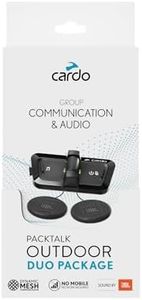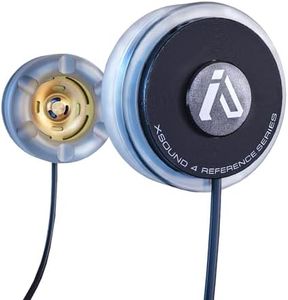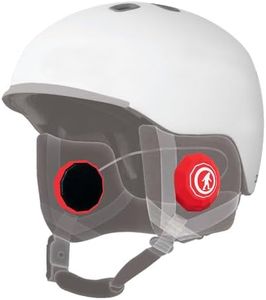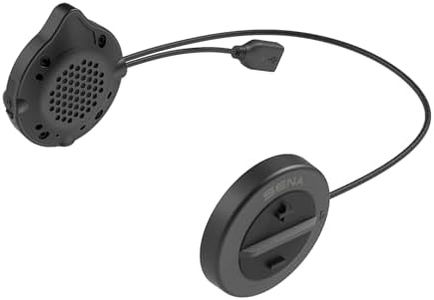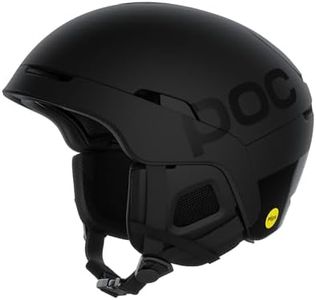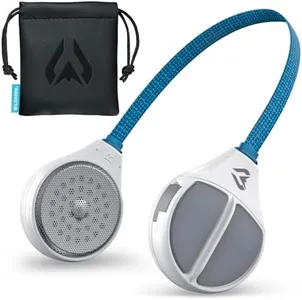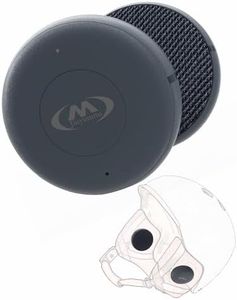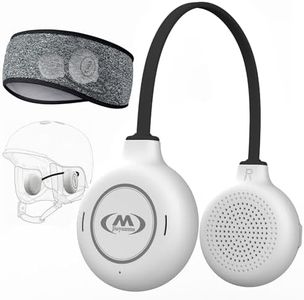We Use CookiesWe use cookies to enhance the security, performance,
functionality and for analytical and promotional activities. By continuing to browse this site you
are agreeing to our privacy policy
10 Best Ski Helmet Headphones
From leading brands and best sellers available on the web.By clicking on a link to a third party's website, log data is shared with that third party.
Buying Guide for the Best Ski Helmet Headphones
Choosing ski helmet headphones is all about enhancing your on-mountain experience while staying safe and comfortable. The right headphones will let you enjoy your favorite tunes or take calls without distracting you from your skiing or snowboarding. Since these headphones need to fit comfortably with your helmet and withstand cold, snowy conditions, it’s important to focus on a few key features that matter for both safety and enjoyment. Always keep in mind how and where you ski to determine which features are most important for you.Helmet CompatibilityHelmet compatibility refers to whether the headphones can fit securely and comfortably inside your ski helmet’s ear pads or slots. Some helmets have specific ear pad pockets for audio chips, while others do not. It’s important because ill-fitting headphones can be uncomfortable, distract you, or even fall out while skiing. To navigate this, check if your helmet is audio-compatible or has designated spaces for headphones. If you have a standard helmet without special pockets, look for universal-fit headphones that are slim and flexible. Think about your helmet first—matching your headphones to your helmet type ensures a seamless fit and better experience.
Sound QualitySound quality determines how well you can hear music, calls, and voice prompts while skiing. Crisp, clear audio can make your day more enjoyable, but excessive bass or lack of clarity may mean missing important sounds around you. Headphones in this category typically range from basic, standard audio to higher-end options with better clarity and deeper bass. For leisurely skiing and background music, standard sound quality may suffice. If you’re an audio enthusiast or want to better hear phone calls, you might prefer models that boast enhanced sound quality for sharper, more immersive listening.
Controls and Ease of UseHaving easy-to-use controls is crucial when you’re wearing gloves or mittens. Controls can mean buttons, dials, or touchpads that allow you to play/pause music, adjust volume, or answer calls. Some offer simple single-button interfaces, while others have larger, glove-friendly controls. Consider how much you’ll need to adjust volume or skip tracks on the slope. If you like to interact with your device frequently, look for headphones with big, tactile buttons specifically designed for use with gloves. If you prefer set-and-forget listening, simple controls may be enough.
Durability and Water ResistanceThis refers to how well the headphones can handle cold, moisture, and physical impact. Durability is important because skiing involves exposure to low temperatures and occasional falls or bumps. Water or sweat resistance means the headphones can work reliably even in wet or snowy conditions, which is essential on the mountain. Products often come rated by their ability to withstand splashes or dust. If you primarily ski in wet, snowy environments, prioritize higher water resistance. For spring or dry mountain days, basic durability may be sufficient.
Battery Life and PowerBattery life shows how long your headphones will work on a single charge, which is important for uninterrupted listening through a long day outdoors. Ski helmet headphones typically offer anything from a few hours to over a full-day of playback. If you are on the mountain for entire days, prioritize models with extended battery life so you don't run out of power. If you typically ski for shorter periods, moderate battery life may be acceptable. Consider how easy it is to recharge, as some may work with removable batteries or portable chargers.
Connectivity (Wired vs. Wireless)Connectivity refers to how your headphones link to your phone or music device—either through cables (wired) or using Bluetooth (wireless). Wired headphones can offer reliable sound and don’t rely on batteries, but wires can sometimes get in the way when you’re active. Wireless options add convenience and freedom of movement but need to be charged regularly. If you value a hassle-free setup and don’t want to worry about battery life, wired may be better for you. If you prefer less clutter and more freedom, wireless headphones are a good match.
Call and Voice Assistant FunctionalitySome ski helmet headphones come with built-in microphones and controls for making or taking calls, and even supporting voice assistants like Siri or Google Assistant. This feature is useful if you need to stay in touch on the mountain or want the convenience of changing music or checking information hands-free. If you expect to make calls or use your phone’s voice assistant while skiing, look for headphones that specifically offer high-quality microphones and good voice pick-up. For those who just want to listen to music, this feature may be less important.
